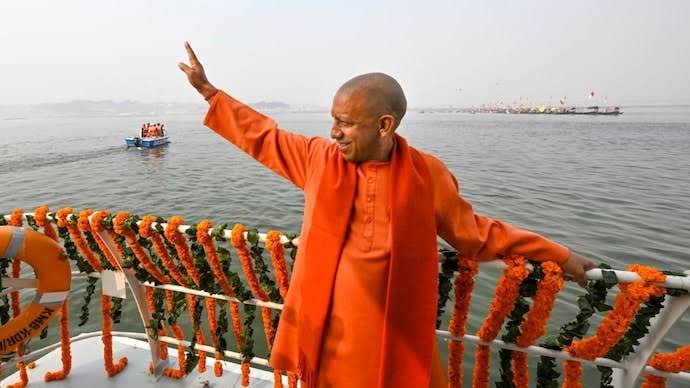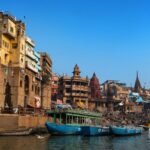A Comprehensive Development Vision
In a historic step to promote religious tourism, economic expansion, and regional development, the Yogi Adityanath government has revealed a bold plan to establish a “Yogi Religious City.” With the integration of seven more districts, this ambitious project would merge the spiritual history of Prayagraj and Varanasi to create a regional center of industrial and cultural advancement. The project aims to increase local economies and job opportunities while transforming Uttar Pradesh into a major religious tourism destination worldwide.
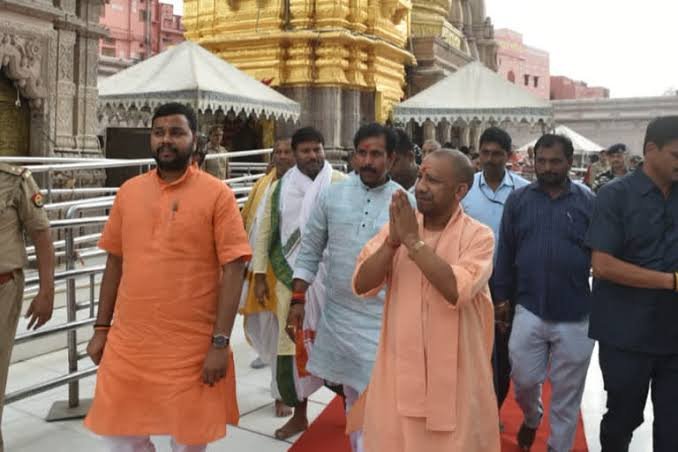
“Yogi Religious City” is a bold plan to transform Prayagraj, Varanasi, and seven districts into a religious and commercial center with the goal of boosting community development, industry, and tourism.
The Main Features of the “Yogi Religious City”
Blending Economic and Spiritual Importance
The Yogi Religious City will include Prayagraj, Varanasi, Chandauli, Ghazipur, Jaunpur, Mirzapur, and Bhadohi and cover an area of more than 22,000 square kilometers. With a population of about 3.37 crore and an economy valued at ₹22.8 billion, this initiative is expected to transform Uttar Pradesh’s industrial and cultural landscape.
The initiative’s focal points will be Varanasi, which is home to the Kashi Vishwanath Temple, Kal Bhairav Temple, and Sarnath, and Prayagraj, which is the site of the holy confluence of the Ganges, Yamuna, and Saraswati rivers.
Economic Potential: Knowledge parks, industrial zones, and cutting-edge infrastructure will all significantly strengthen local economies.
An Authority for Regional Development
The Uttar Pradesh government intends to create a regional development authority to guarantee the successful completion of this enormous undertaking. This organization will supervise project planning and execution, guaranteeing equitable growth and sustainable development throughout the area.
A Strategic Action in Line with the Vision of NITI Aayog
A strategy for India to reach a $30 trillion economy by 2047 has been laid forth by the NITI Aayog. Programs for regional development form the basis of this concept. These goals are easily met by the establishment of the Yogi Religious City, which highlights the contribution of religious and cultural centers to economic development.
Development of Infrastructure
State-of-the-Art Technology: To improve public services, governance, and connectivity, the city will integrate state-of-the-art technology.
Industrial Zones: Industry-specific zones will draw investment and open doors for nearby companies.
Knowledge Parks: These centers will support youngsters by promoting creativity, research, and skill development.
“Yogi Religious City”: A Tourist Attraction
A Place of Spirituality
Offering a diverse range of religious, historical, and cultural events, the city will draw millions of pilgrims and tourists each year. Among the main draws are:
One of the holiest temples in Hinduism is the Kashya Vishwanath Temple.
One of the most important Buddhist pilgrimage sites is Sarnath.
Triveni Sangam: Prayagraj’s holy confluence.
A spiritual and ecological landmark in Ghazipur is the Ganga North Channel.
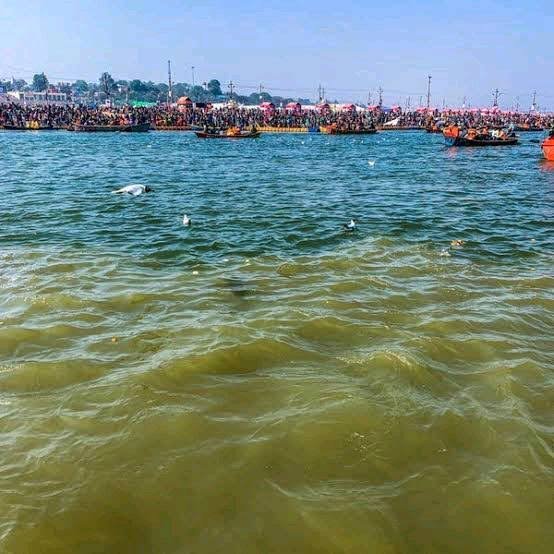
Better Infrastructure for Tourism
In order to provide guests with a smooth and enjoyable experience, the development plan incorporates contemporary tourist amenities like better hotel options, transit systems, and guided tours.
Economic Development
Job Possibilities
For locals, the Yogi Religious City project will create a large number of job opportunities, especially in:
Tourism and Hospitality: lodging facilities, dining establishments, and travel agencies.
Infrastructure and Construction: constructing industrial zones, bridges, and roadways.
Education and Research: Training facilities and knowledge parks offer opportunities.
Strengthening Local Companies
By combining knowledge parks with industrial zones, a strong environment will be established for regional business owners, encouraging creativity and entrepreneurship.
Preservation of the Environment and Culture
Eco-Friendly Development
With ambitions to adopt green practices and technologies, the project places a strong emphasis on sustainability. Among the measures are:

Sources of renewable energy.
Systems for managing waste.
River and natural landscape conservation.
Maintaining Cultural Traditions
In order to ensure the continuation of the region’s rich cultural heritage for future generations, efforts will be made to preserve and promote it, including traditional dance, music, and artisan forms.
Focused Districts
Prayagraj
Prayagraj is well-known for its religious and historical significance and is the site of the Kumbh Mela, which draws millions of pilgrims every year. In the Yogi Religious City, the city will be a crucial hub.
Varanasi
Varanasi, one of the oldest cities in the world, is home to several religious and cultural sites. Its incorporation guarantees the project’s worldwide appeal.
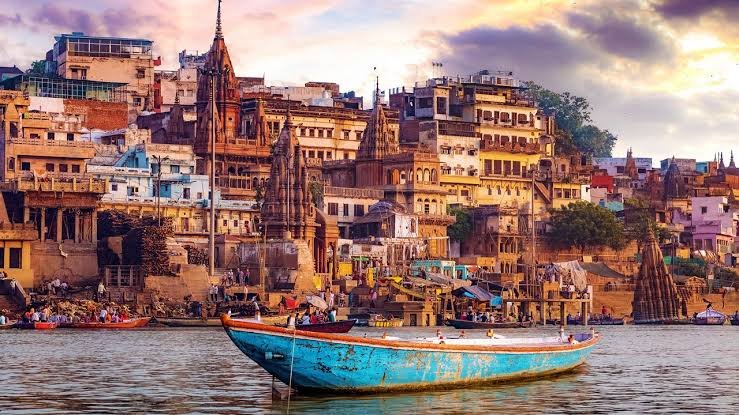
Ghazipur and Chandauli
The diversity of the area is increased by these districts’ distinctive natural and cultural assets, like the Ganga North Channel.
Bhadohi, Mirzapur, and Jaunpur
These regions, which are renowned for their exquisite craftsmanship and lengthy history, will gain from enhanced economic prospects and infrastructure, which will incorporate them into the larger growth framework.
Development of the Proposal
Thorough Planning
Chief Minister Yogi Adityanath received a thorough proposal outlining the project’s advantages. The Chief Minister underlined how crucial it is to guarantee the greatest possible benefits for locals and young people.
Phases of Implementation
Beginning with the creation of the regional development authority and infrastructure development, the project will be carried out in stages. Growth in industry and tourism will be the main focus of later stages.
Difficulties and Resolutions
Difficulties: Relocation and land purchase.
Development and cultural preservation must be balanced.
Environmental issues.
Solutions: Open and honest land acquisition regulations.
Involving the community to solve issues.
Adopting sustainable practices can help reduce the impact on the environment.
Conclusion: Yogi Adityanath’s Masterstroke
Chief Minister Yogi Adityanath’s creation of the Yogi Religious City, which blends the area’s spiritual legacy with economic and infrastructure advancement, is a masterstroke. In addition to supporting national objectives, this ground-breaking project aims to improve the lives of millions of people in Uttar Pradesh.
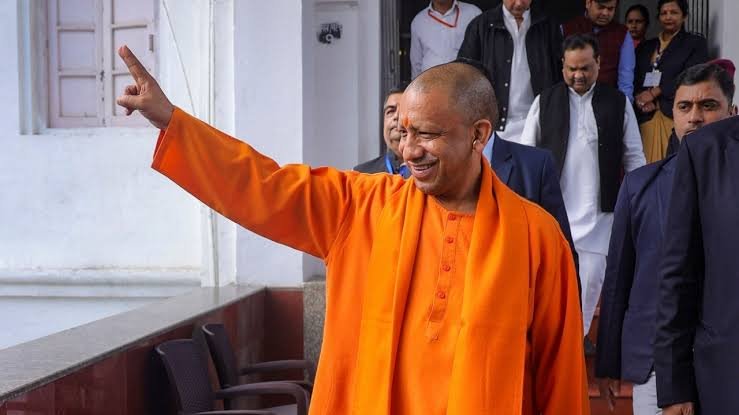
The Yogi Religious City, which sets the standard for regional development in India by fusing the traditional with the modern, is a monument to creative leadership. With its focus on inclusivity, sustainability, and cultural preservation, this initiative has the potential to become a global integrated development model.
For the people of Uttar Pradesh and beyond, the “Yogi Religious City” is more than just a development project—it represents a promise of advancement, spirituality, and prosperity.

